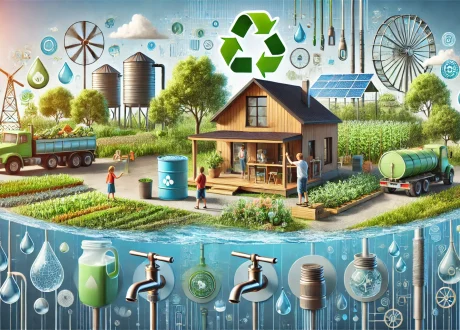
Water Conservation: 7 Simple Ways to Save Water at Home and in Your Business
Water is one of our most precious resources, yet it is often wasted without thought. ...

The International Day for Disaster Risk Reduction on 13 October focuses on youth and “empowering the next generation for a resilient future.”
The International Day for Disaster Risk Reduction 2024 calls on countries to harness the education sector to reduce the disaster risks of school-aged children, especially by investing in two key areas; protect children and youth through safe schools and education facilities and empower children and youth to be safe through age-appropriate education to understand and act on the risks they face. This includes building their preparedness to take early action in response to early warnings. Empowered children become agents of change for more resilient communities.
“Young people must be equipped with skills and knowledge to shape a greener, cleaner, more climate resilient future,” said UN Secretary-General António Guterres.
During a visit to the Pacific Islands Forum in Tonga in august, Guterres visited a classroom and presented a new booklet in the Tongan language to encourage children to become disaster champions. These are all in support of the global Early Warnings For All initiative and the Weather Ready Pacific program.
The World Meteorological Organization (WMO) is convinced that the convergence of Multi-Hazard Early Warning Systems (MHEWS) and youth engagement is crucial for adapting and building resilience to climate change.
With nearly 2 billion young people globally, many reside in regions significantly impacted by climate-related disasters, such as Least Developed Countries (LDCs) and Small Island Developing States (SIDS).
In these regions, MHEWS coverage remains alarmingly low, with only 44% of LDCs and 38% of SIDS reporting effective MHEWS.
The economic toll of disasters is significant, with losses averaging USD 131 billion annually from 2015 to 2022. For LDCs, the financial burden is 7.5 times higher than the global average.
“To avoid burdening youth with the consequences of climate change, it is imperative that we prioritize their involvement in creating and implementing robust MHEWS, thereby paving the way for a sustainable and resilient future,” said WMO Secretary-General Celeste Saulo.
“Furthermore, integrating youth perspectives into the development of MHEWS can enhance the effectiveness and relevance of these systems. Young people bring fresh ideas and innovative solutions that can address the unique challenges posed by climate change,” she said.
اترك تعليقا